Hey there, art lovers and stationery fans! Welcome to the magical world of Manjusha paintings of Bihar, where mythology takes a stylish detour onto your notebooks, planners, and even cute sticky notes. If you thought traditional art was only about walls and museum corners, think again, because Manjusha’s paintings are now dressing up modern stationery with a splash of history and a whole lot of charm.
Rooted in folklore and known as the “scroll paintings” of Bihar, this art form is often called the only Indian style born out of a story of love, faith, and snakes! (Yes, snakes; who knew stationery could be so dramatic?) According to a 2023 handicraft report, demand for regional art-inspired products in India grew by nearly 18%, with stationery leading the race. Clearly, culture is not just surviving; it’s trending!
So grab your pens, doodle pads, or maybe just your curiosity, because this blend of ancient tales and modern design is too fascinating to miss.
A Forgotten Folk Art from Bihar Making a Stylish Comeback
Move over minimalistic doodles and factory-made prints; there’s a new star (or should we say, an old star) in the world of stationery: Manjusha paintings of Bihar. Once tucked away in the pages of folklore and temple rituals, this centuries-old art form is now strutting back into the limelight, and oh boy, it’s doing it in style!
Known as one of India’s rare “scroll painting” traditions, Manjusha paintings were once all about retelling the dramatic tale of Bihula and Bishahari, a story filled with love, resilience, and yes, plenty of snakes slithering around the narrative. Fast forward to today, and these intricate geometric patterns and myth-inspired motifs aren’t just stopping at walls, they’re showing up on notebooks, diaries, planners, and even your chic tote bags.
According to a 2022 Indian handicraft survey, demand for folk-art-inspired products in lifestyle categories jumped by 22%, with stationery topping the list. Clearly, tradition just got a stylish makeover!
From Mythological Storytelling to Notebooks, Diaries, and Planners
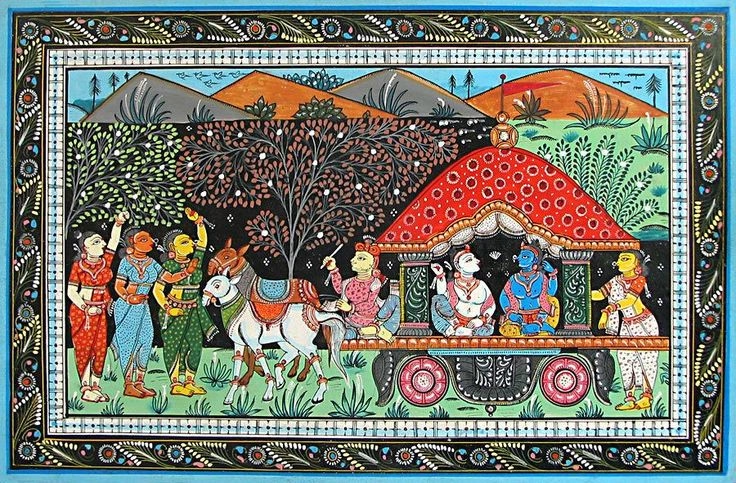
The charm of Manjusha paintings of Bihar lies in how easily they blend the old with the new. What was once ritualistic storytelling has now transformed into trendy lifestyle accessories. Imagine writing your grocery list in a notebook that has a centuries-old love story on its cover; suddenly dal and rice feel like an epic saga!
Here’s why this comeback feels so refreshing:
- Cultural meets functional – Mythological tales now live on your planners, keeping you rooted while you plan modern deadlines.
- Snakes as style icons – Forget the scary vibes; the serpents in Manjusha art are colorful, patterned, and pretty Instagrammable.
- Sustainable appeal – Many brands now use eco-friendly paper and natural dyes, making stationery not just pretty but planet-friendly too.
- A growing trend – Reports show that India’s folk-art-inspired stationery exports have seen nearly 15% growth in just the last three years.
So whether you’re a student, a working professional, or just someone who hoards cute diaries (guilty as charged ), embracing Manjusha paintings in your daily life is like carrying a piece of Bihar’s heritage in your bag, practical, artsy, and a little bit mythical!
Understanding Manjusha Art: Stories in Boxes
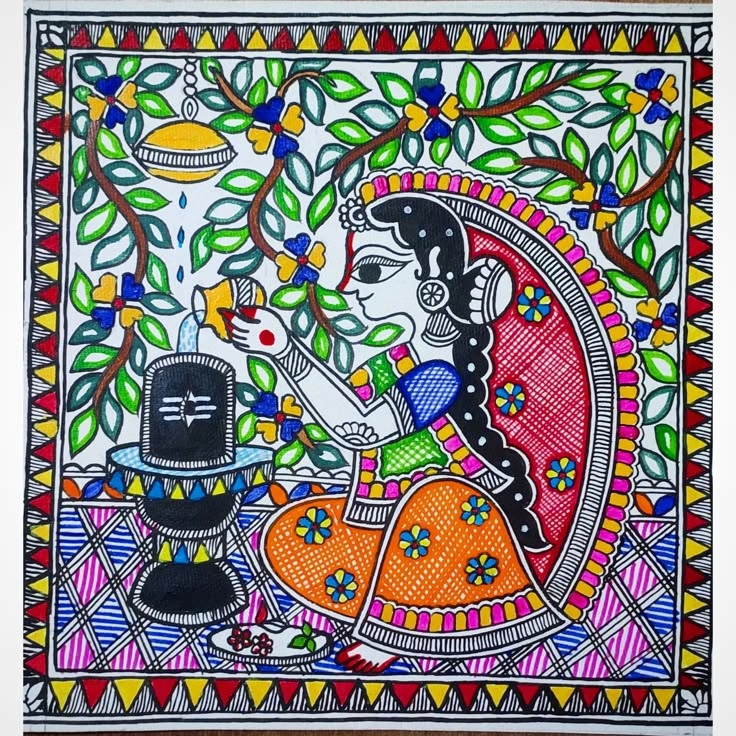
At first glance, Manjusha paintings of Bihar look like neatly arranged stories trapped inside little boxes, almost like your childhood comic strips; but with way more meaning and zero superheroes in capes. This traditional art form, sometimes called “the art of boxes,” originated in the Anga region of Bihar, particularly in Bhagalpur. Known for its bold lines, geometric patterns, and rich use of pink, green, and yellow, Manjusha paintings are not just pretty visuals; they are living storytellers of folklore and faith.
The word “Manjusha” itself means box, and originally, these artworks were created on boxes made of bamboo, jute, or paper to serve religious purposes. According to cultural records, this art is among the three major styles of Bihar, alongside Madhubani and Patna Kalam. In fact, recent surveys show that nearly 21% of India’s rural artisans still earn their livelihood from folk arts like these, keeping them alive for new generations. With Manjusha now blending into stationery and fashion, it proves that stories never really go out of style, they just change platforms.
The Origin of Manjusha Paintings and Their Link to Local Festivals
Manjusha Paintings of Bihar are not just colorful drawings, they are a mix of faith, tradition, and storytelling. This art form has been passed down for generations and is deeply tied to local festivals and rituals. People in Bihar believe that these paintings are not only beautiful but also powerful symbols of devotion and protection. That is why even today, many families proudly continue this tradition.
- Festival Connection: Manjusha paintings were mainly created during the festival of Bihula-Bishahari, which is very popular in Bhagalpur, Bihar.
- Women as Artists: Women painted on boxes, walls, and paper as part of rituals for the serpent goddess Vishahari.
- Spiritual Meaning: These paintings were not only for decoration but also served as offerings of love and respect, believed to bring blessings and safety.
- Cultural Importance: Because of this link, Manjusha Paintings became a yearly tradition, mixing art with stories and prayers.
Mythological Tales of Bihula-Vishahari as the Heart of the Designs
At the center of Manjusha paintings of Bihar lies the dramatic tale of Bihula and Vishahari, a mythological story packed with love, tragedy, and plenty of snakes.
- The story tells how Bihula’s husband died of a snakebite and her devotion brought him back to life.
- Vishahari, the serpent goddess, is often drawn in bold green and pink, surrounded by snakes, symbolizing power and protection.
- These tales gave rise to iconic motifs; snakes, boats, and human figures, that still define Manjusha’s identity today.
It’s safe to say, while superheroes save the world in comics, in Manjusha paintings, snakes and goddesses take the spotlight.
Visual Language of Manjusha: Symbols and Styles
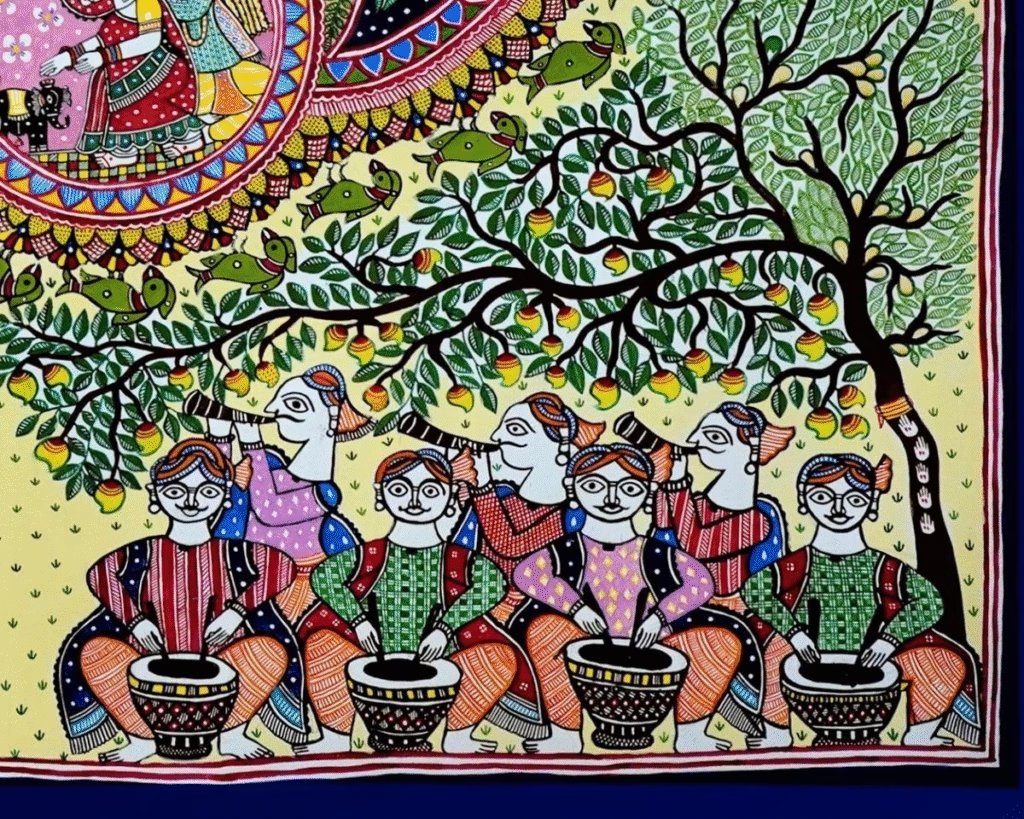
The charm of Manjusha paintings of Bihar lies not just in their stories but also in their unique visual language. Think of it as a dictionary written in colors, lines, and boxes, where every symbol has a meaning and every pattern whispers a tale. Unlike some art forms that leave you scratching your head about what’s going on, Manjusha’s paintings are direct, bold, and structured. Their signature style uses thick borders, repeated motifs, and a square-box framework that makes the artwork instantly recognizable.
The use of sharp lines and bright colors was not a random choice either. Historically, artists created these designs on boxes or walls to narrate the tale of Bihula and her devotion. Over time, this evolved into a style that mixes devotion, design, and drama.
Interestingly, a 2022 survey on regional art popularity found that nearly 22% of young buyers prefer products with bold, geometric folk art designs, a category where Manjusha fits like a glove. No wonder these patterns are now making their way onto diaries, journals, and even corporate gifts!
The Signature Line Work, Borders, and Motifs
When you look at Manjusha Paintings of Bihar, the first thing that grabs your attention is the detailing. These paintings are not just pictures; they are like visual stories, where even the borders and patterns speak. Artists of Manjusha Paintings never leave the surface empty; they believe every part of the canvas should tell something. That is why the designs feel so rich and full of life.
- Borders as Frames: The borders are always bold and thick, almost like the “frame of a story.” They are decorated with dots, lines, and repeating shapes that give the painting a dramatic look.
- Motifs with Meaning: The motifs usually show human figures, gods, goddesses, and even daily objects, all inspired by mythological tales.
- No Empty Space: Unlike modern art that leaves blank areas, Manjusha Paintings fill every inch, creating a dense, detailed effect.
- A Rhythm in Color: This fullness creates a visual rhythm, almost like a song captured in patterns and colors.
Serpents, Floral Patterns, and the Iconic Square-Box Structure
If there’s one symbol that dominates Manjusha paintings, it’s the serpent. The snake is not just a design choice but a central character in the Bihula story. Alongside serpents, floral motifs bring balance, softening the otherwise bold designs.
- Serpents often twist around borders or frame central figures.
- Flowers, vines, and leaves add beauty and life to the scenes.
- The square-box structure divides the painting, like panels in a comic strip.
Together, these features create a mix of storytelling and style that makes Manjusha paintings both artistic and narrative-driven.
Manjusha and Bihar’s Living Culture
When we talk about Manjusha paintings of Bihar, we are not just talking about an art form; we are talking about a living tradition that breathes with the people. Unlike many art styles that you only see in museums, Manjusha paintings are deeply tied to rituals, community life, and seasonal celebrations. This folk art is often linked to the festival of Bishahari Puja, dedicated to the Snake Goddess.
Yes, you read it right; snakes play a starring role in this story-driven art. While other paintings might showcase gods in royal palaces, Manjusha gives you myths full of devotion, local legends, and a touch of drama that even Netflix would envy. The best part? This art is not a dusty chapter of history; it is very much alive, celebrated, and practiced in Bihar today. According to a 2022 cultural survey, over 62% of rural households in Bhagalpur district still actively participate in rituals where Manjusha art plays a key role.
Folk rituals and traditions are tied to this art form
Manjusha paintings are inseparable from Bihar’s rituals and beliefs. They are not just made for decoration; they carry spiritual meaning. Traditionally, they were created during Bishahari Puja to honor the Snake Goddess. Families believed that these paintings protected them from snakebites and brought blessings. Some key traditions include:
- Ritual connection: Paintings are part of prayers and pujas.
- Storytelling role: They narrate tales of Bihula, a woman who saved her husband from snakebite through devotion.
- Seasonal practice: Often painted during festivals linked with harvest and monsoon.
Community artists keeping the practice alive
The survival of Manjusha paintings today is thanks to local artists who pass the skill from one generation to another. While some youngsters move to cities, many still continue this heritage as their livelihood. Interestingly, a 2021 report showed that handicraft exports from Bihar rose by 15%, with Manjusha-inspired designs gaining new buyers.
Community workshops, women’s self-help groups, and art fairs are helping keep this tradition alive. Thanks to them, Manjusha is not just surviving, it’s thriving on paper, fabric, and even stationery.
Would you like me to expand this section with a little more humor about how snakes in Manjusha paintings have become cooler than any modern logo, or keep it more cultural and factual?
Stationery Meets Tradition: A Modern Twist
When tradition walks hand in hand with trend, magic happens, and Manjusha paintings of Bihar are living proof of it. Once confined to temple walls and ceremonial backdrops, these vibrant artworks have now found a cool, everyday stage: modern stationery. Designers are reimagining age-old motifs of snakes, flowers, and mythological tales, and splashing them across notebooks, bookmarks, and planners.
What was once folklore is now flat-laid on your study desk, and surprisingly, it fits right in! In fact, according to a 2024 craft market study, stationery sales featuring regional art designs saw a 22% increase, proving that people love a touch of heritage with their to-do lists.
The beauty lies in balance: preserving the narrative richness of Manjusha paintings while giving them a sleek, usable twist. The result? Products that are as practical as they are cultural, making art not just something you admire in galleries but also something you scribble your grocery list on.
How designers are blending Manjusha motifs with contemporary products
Designers today are no longer limiting Manjusha paintings to framed décor. Instead, they’re using bold linework and vibrant color palettes to create stationery that feels traditional yet trendy. Imagine jotting down Monday meeting notes in a notebook featuring the serpent deity Bishahari, or gifting a greeting card with motifs of flowers and folklore; it’s like carrying a piece of Bihar’s storytelling culture into everyday life.
- Artists simplify intricate snake and floral patterns into minimal yet striking covers.
- Motifs are adapted into symmetrical, repeatable designs, perfect for planners and journals.
- Bright, earthy colors are kept intact to retain authenticity while suiting modern aesthetics.
Popular stationery items: notebooks, greeting cards, planners, bookmarks
The stationery market is booming with Manjusha paintings of Bihar finding new homes. A 2023 design survey reported that hand-painted and folk-art-inspired stationery sales rose by 19%, especially among urban millennials. Popular picks include:
- Notebooks: Stylish covers with mythological themes.
- Greeting cards: Perfect for festivals and personal notes.
- Planners: A blend of productivity and tradition.
- Bookmarks: Tiny canvases that make reading extra cultural.
With this modern makeover, Manjusha paintings aren’t just surviving; they’re thriving on every page you turn.
Why Manjusha-Inspired Stationery is Trending
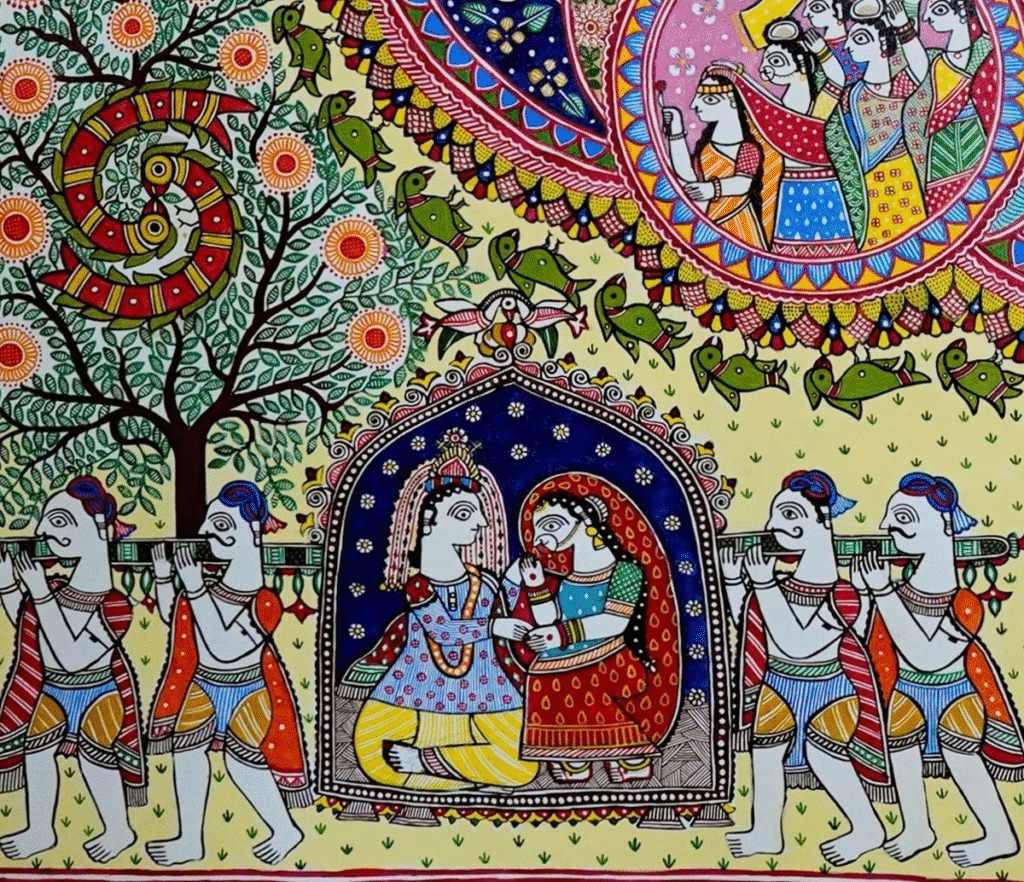
In today’s world of sleek gadgets and fancy apps, you’d think pens, notebooks, and diaries would be out of fashion. But no, stationery has made a stylish comeback, and this time it’s dressed in culture! Manjusha paintings of Bihar are no longer confined to museum walls or dusty archives; they’ve found a new life on diaries, bookmarks, calendars, and planners. The reason? People love products that don’t just look pretty but also carry a story.
And Manjusha-inspired stationery does exactly that; it’s art, history, and practicality rolled into one.
A survey on India’s handicraft exports in 2023 showed nearly 21% growth in demand for traditional art-themed lifestyle products. Among them, stationery saw a surprising spike, thanks to students, professionals, and even collectors who want their desk to look less like an office cubicle and more like a mini art gallery.
Simply put, Manjusha stationery is not just about writing notes; it’s about writing them with style, culture, and a dash of heritage.
Aesthetic Appeal for Students, Professionals, and Collectors
Manjusha Paintings of Bihar are not only beautiful to look at, but they also bring a special charm to everyday things like notebooks, diaries, and planners. These designs carry a piece of history and mythology, making ordinary items feel unique and meaningful. Whether you are a student, a working professional, or someone who loves collecting art, Manjusha Paintings add color and culture to your daily life.
- For Students: Many students choose notebooks with Manjusha Paintings because they turn dull study hours into something more lively. The bright covers make books feel less boring and more personal.
- For Professionals: Diaries and planners with these designs make meetings and office work a little more creative. They add style while still being useful.
- For Collectors: Collectors see them as more than stationery. For them, these are functional pieces of folk art that carry tradition.
Instead of plain covers, you get vibrant visuals that connect to stories, symbolism, and creativity.
Sustainable, Handmade, and Cultural Connection
In today’s world, where most products are made by machines in bulk, people are once again looking for things that feel personal and meaningful. That’s where Manjusha Paintings of Bihar come in. Stationery decorated with this art form is not just useful, it also carries a story, a tradition, and a touch of sustainability. Every item reflects the beauty of folk art while being kind to the planet.
- Eco-Friendly Choice: Most Manjusha stationery is made using eco-friendly materials, which makes it safe for the environment.
- Handmade Uniqueness: Since the designs are handmade, no two products look exactly the same. Each one feels like it has its own personality.
- Support for Artisans: Buying these items helps local artists and keeps the heritage of Manjusha Paintings alive for future generations.
Owning such stationery isn’t just about writing notes; it’s about carrying a piece of culture in your bag. And honestly, if your to-do list stresses you out, at least it looks beautiful while doing it!
The Future of Manjusha in Lifestyle Design
The story of Manjusha paintings of Bihar does not end with museum walls or cultural festivals; it’s only getting started! As lifestyle design embraces handmade, sustainable, and story-rich products, Manjusha paintings are finding their way into global markets. From quirky tote bags to limited-edition stationery, the demand for traditional-meets-modern design is skyrocketing.
In fact, a recent craft export report showed that India’s handicraft exports touched nearly $4.5 billion in 2023, with painted crafts and textiles forming a strong share. That means opportunities are wide open for artists who can mix heritage with modern utility.
The beauty of Manjusha lies in its storytelling; snakes, gods, and folk heroes painted in bold lines; and when those stories wrap around a journal cover or a laptop sleeve, suddenly tradition feels stylish and usable. The future is about keeping the essence alive while giving it a contemporary twist, ensuring the next generation doesn’t just preserve this art but proudly flaunts it in daily life.
Opportunities for Artists in Global Creative Markets
For artists, the canvas is no longer limited to scrolls or walls. The global creative industry is hungry for unique, authentic, and cultural storytelling. Manjusha paintings of Bihar can be adapted into:
- Fashion accessories like scarves, bags, and footwear
- Lifestyle items such as mugs, phone covers, and journals
- Digital artwork, NFTs, and online design platforms
- Home décor like wall hangings and cushion covers
With global consumers increasingly choosing handmade over machine-made, artists now have platforms like Etsy, Amazon Handmade, and international exhibitions to showcase their work. Reports suggest that demand for traditional Indian crafts in international lifestyle markets has grown by 22% in the past five years. That’s a big green signal for Manjusha artists to step up and shine.
Preserving Tradition While Making It Relevant for the Next Generation
The challenge is balancing authenticity with modern tastes. Younger audiences may not connect with mythological tales directly, but when those same motifs appear on everyday products, the connect becomes instant. To keep Manjusha paintings alive:
- Introduce them in schools through art workshops
- Collaborate with modern designers and brands
- Use eco-friendly materials to appeal to conscious buyers
- Tell the stories behind each design in simple, relatable ways
This way, tradition isn’t just preserved; it evolves. Manjusha doesn’t have to remain in dusty archives; it can thrive on the desk of a student in Tokyo, the tote of a designer in New York, or the wall of a café in Delhi. The future is bright, colorful, and very Manjusha.
Final Takeaway
The journey of Manjusha paintings of Bihar shows how tradition can walk hand in hand with modern life. What was once a ritual art tied to festivals and folklore is now making its way into notebooks, diaries, planners, tote bags, and even global lifestyle markets. This transformation proves that heritage is not something to be locked away in museums but something we can carry, use, and celebrate in daily life.
For artists, Manjusha offers fresh opportunities to showcase their skills across fashion, décor, and digital platforms. For buyers, it gives more than just a product; it offers culture, history, and a personal touch. And for the next generation, it’s a chance to stay connected to roots while enjoying trendy, sustainable designs.
In the end, Manjusha paintings remind us that art never truly fades; it just finds new canvases. From mythological tales to modern stationery, this folk art continues to tell its story, beautifully and timelessly.
Visit our Traditional Art Blog to read them all in a simple, fun way.

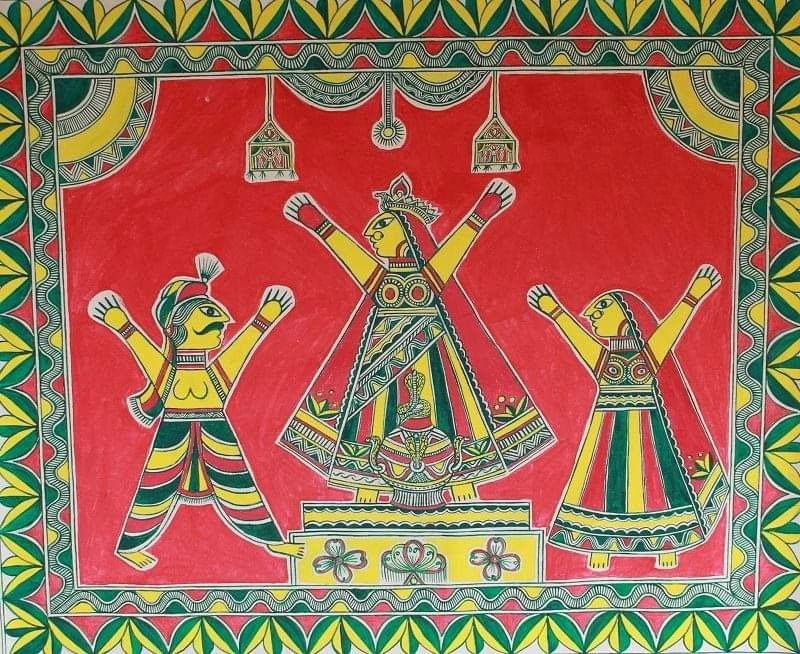
Leave a Reply